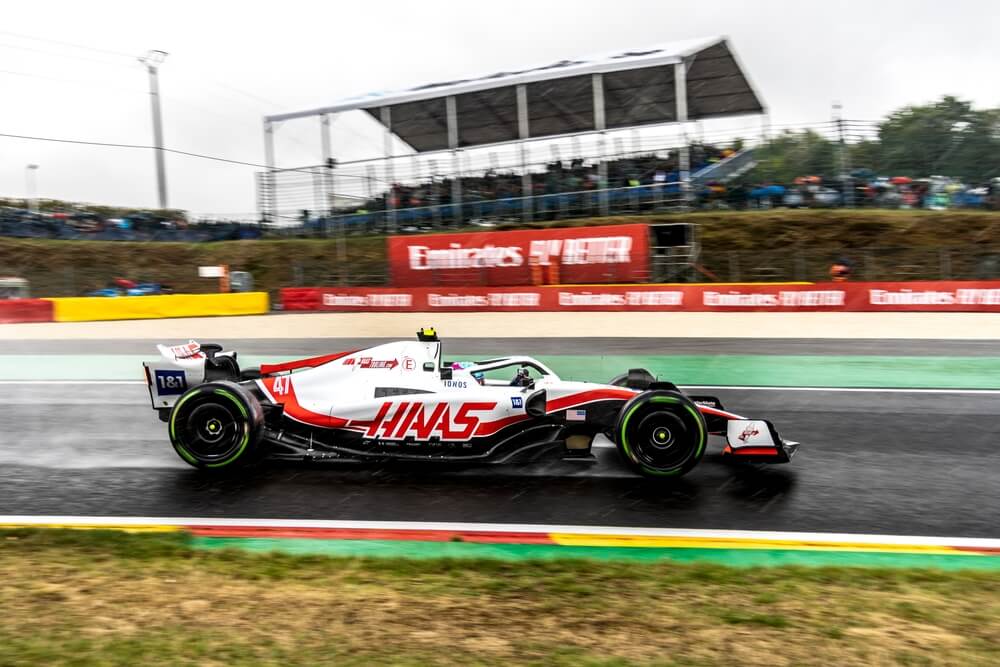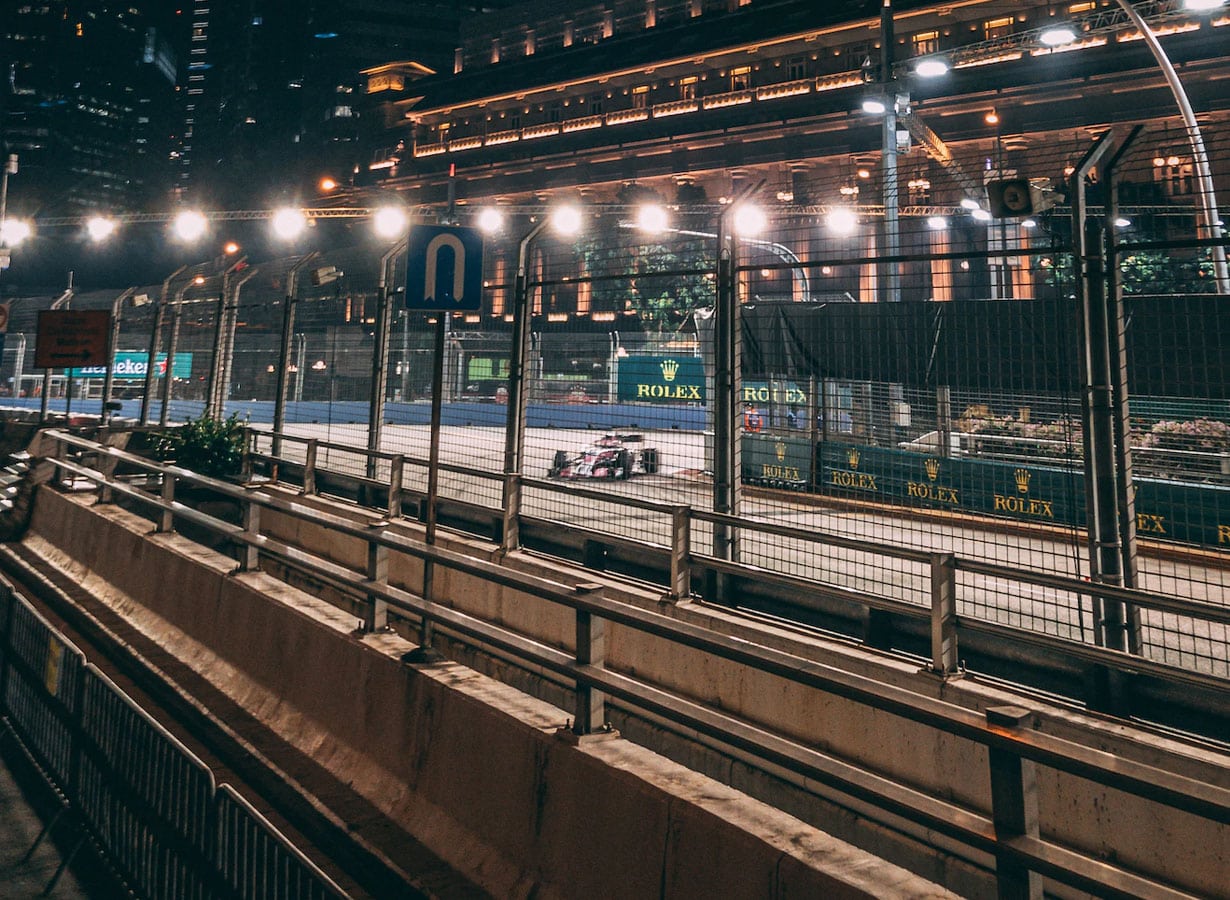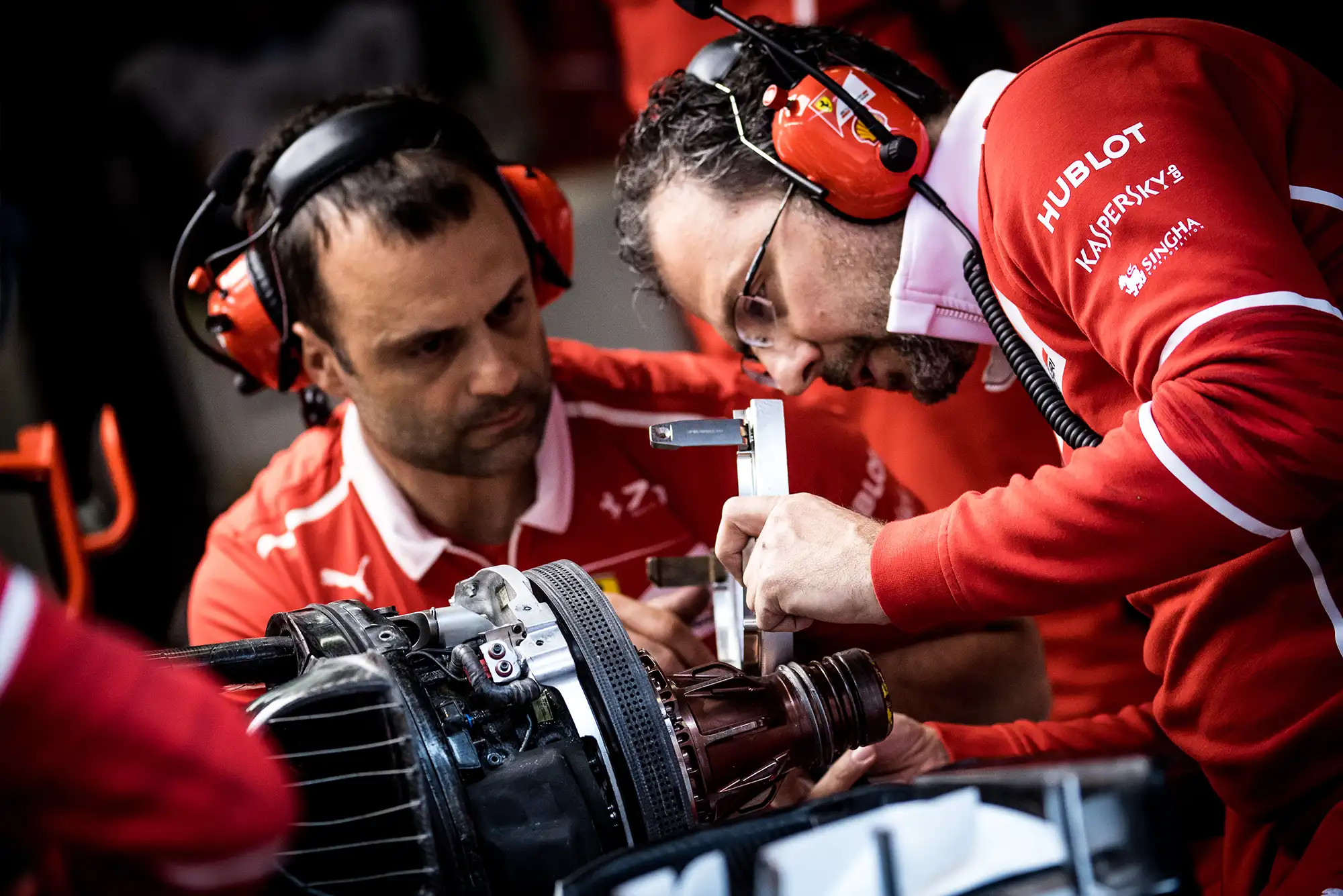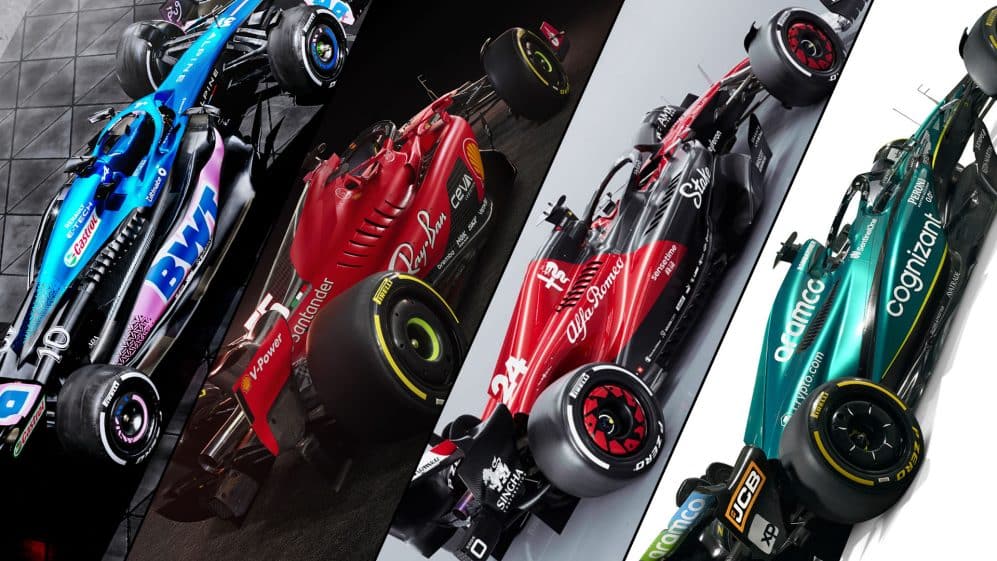In the high-speed world of Formula One racing, every aerodynamic advantage counts. One crucial component of a Formula One car’s aerodynamic design is the splitter. This small but powerful device is mounted at the front of the car and plays a key role in directing airflow underneath the car.
By generating downforce and reducing drag, a splitter can significantly improve a car’s handling and performance on the track. Made from lightweight and durable materials like carbon fiber or titanium, splitters are meticulously designed and engineered to meet the rigorous demands of Formula One racing.
In this article, we will explore the science and engineering behind splitters, their importance in Formula One racing, and the challenges involved in maintaining and repairing these critical components during a race weekend.
Table of Contents
Watch this video to learn more about the front wing in general and splitter.
What is a Splitter?
A splitter is an aerodynamic device that is mounted at the front of a Formula One car. It helps to direct the airflow underneath the car. This small but powerful component is designed to generate downforce, which improves grip and cornering performance. At the same time it’ll also reduce drag to increase top speed.
Splitters work by creating a boundary layer of air that helps to control the airflow around the car and reduce turbulence. By reducing the amount of airflow that passes under the car, a splitter can also help to reduce the amount of lift that is generated. That can improve the stability and control of the car.
Types of splitters used in Formula One
There are several different types of splitters used in Formula One. Each designed to meet specific performance requirements. One common type is the single-element splitter. It features a flat plate that extends out from the front of the car.
Another popular design is the multi-element splitter. It features multiple flat plates stacked on top of each other. This design allows for greater flexibility in adjusting the angle and position of the splitter to fine-tune the car’s aerodynamics.
Other types of splitters include undertrays. They extend further back under the car, and canards, which are small fins mounted on the sides of the splitter to help direct airflow.
Materials used to make splitters
Splitters in Formula One are typically made from advanced materials such as carbon fiber or titanium. These materials are chosen for their strength, stiffness, and low weight. It allows the splitters to withstand the high speeds and forces involved in racing.
Carbon fiber is a particularly popular choice. Mainly because it can be molded into complex shapes and is resistant to fatigue and impact damage. Titanium is also used in some splitters, as it has a high strength-to-weight ratio and excellent corrosion resistance.
Other materials that may be used in splitter construction include aluminum, steel, and composites made from different materials. Regardless of the material used, splitters are designed to be as lightweight and durable as possible. They need to be that in order to maximize performance and withstand the demands of Formula One racing.
Key Takeaways
- A splitter is an aerodynamic device mounted at the front of a Formula One car that helps to direct airflow underneath the car.
- Splitters generate downforce, which improves grip and cornering performance, and can also reduce drag to increase top speed.
- There are several types of splitters used in Formula One, including single-element and multi-element designs, undertrays, and canards.
- Splitters are typically made from advanced materials like carbon fiber or titanium, which are lightweight and durable.
- Proper maintenance and repair of splitters is essential for maintaining peak performance and safety on the track.

Function of a Splitter
The main function of a splitter in Formula One racing is to generate downforce by directing airflow underneath the car. Downforce is the aerodynamic force that pushes a car towards the ground. It improves grip and stability in corners and reduce the risk of losing control.
A splitter achieves this by creating a boundary layer of air that helps to control the airflow around the car and reduce turbulence. Additionally, by reducing the amount of airflow that passes under the car, a splitter can also help to reduce the amount of lift that is generated, improving stability and control.
Aerodynamic principles behind the use of a splitter
The key aerodynamic principle behind the use of a splitter in Formula One racing is Bernoulli’s principle, which states that as the speed of a fluid (in this case, air) increases, its pressure decreases. By directing airflow under the car, a splitter creates a low-pressure area that generates downforce by pulling the car towards the ground. The shape and angle of the splitter are crucial in optimizing this effect, as they determine the amount of airflow directed towards the car and the size and location of the low-pressure area.
How a splitter affects the airflow around the car
A splitter affects the airflow around a Formula One car by creating a boundary layer of air that helps to control the airflow and reduce turbulence. As air flows around the car, some of it is redirected towards the underside of the car by the splitter, creating a low-pressure area. This low-pressure area generates downforce, which improves grip and stability, while also reducing lift and improving control. The shape and angle of the splitter are crucial in optimizing these effects, as they determine the amount and direction of airflow directed towards the car.
The impact of a splitter on downforce and drag
The impact of a splitter on a Formula One car’s downforce and drag is significant. By generating downforce, a splitter improves grip and cornering performance, allowing for faster lap times. At the same time, by reducing the amount of airflow passing under the car, a splitter can also reduce drag, allowing for higher top speeds. However, it’s important to note that there is a tradeoff between downforce and drag, and finding the right balance is crucial for optimizing performance. Additionally, changes in track conditions, temperature, and other factors can affect the performance of a splitter, requiring adjustments and fine-tuning by the team.
Importance of a Splitter in F1
Splitters are a crucial component in the design of Formula One cars. They play a significant role in the cars overall performance.
By generating downforce, splitters help to improve grip and stability. It enables drivers to take corners at higher speeds and with greater control. They also reduce the amount of lift generated by the car. It improves its overall aerodynamics and handling. The design and use of splitters are constantly evolving. Teams invest heavily in research and development to optimize their performance.
Contribution to the overall performance of a F1 car
The contribution of splitters to the overall performance of a Formula One car cannot be overstated. Along with other aerodynamic devices like wings and diffusers, splitters are critical in generating downforce. Downforce is essential for improving grip and cornering performance.
The design and placement of splitters are also crucial in balancing downforce and drag. Too much drag can slow the car down, while too little downforce can make it unstable and difficult to control. In short, splitters are an essential part of the aerodynamic package that enables Formula One cars to achieve the incredible speeds and handling that they are known for.
The impact of rule changes on the design and use of splitters
Rule changes in Formula One racing have had a significant impact on the design and use of splitters over the years. As the rules governing aerodynamic devices have become more restrictive, teams have had to find new ways to optimize the performance of their splitters while complying with the regulations.
For example, recent rule changes have limited the number of elements that can be used in a splitter design, leading to the development of more complex multi-element designs that can still generate significant downforce.
Additionally, rules governing the height and width of splitters have also been modified to prevent teams from using excessively large or small designs that could give them an unfair advantage. In this way, rule changes have helped to promote fair and competitive racing while still allowing teams to innovate and push the boundaries of what is possible in Formula One.
Splitter Maintenance and Repair
Like any other component of a Formula One car, splitters are subject to wear and tear during races. To ensure that they remain in peak condition, teams need to have a comprehensive maintenance and repair plan in place. This involves regular inspections to identify any signs of damage or wear. As well as timely repairs to prevent more extensive damage from occurring.
Proper maintenance and repair of splitters can also help to optimize their performance. It will ensure that they continue to generate the downforce needed for high-speed cornering and stability.
Wear and tear on a splitter during a race
During a race, splitters are exposed to a range of stresses and forces that can cause wear and tear. These include impacts from debris on the track, vibration and flexing from high speeds, and exposure to heat and friction.
Over time, these forces can cause cracks, deformations, and other types of damage that can impair the performance of the splitter. To prevent these issues, teams need to regularly inspect their splitters and make any necessary repairs or replacements.
Techniques for maintaining and repairing a splitter
There are several techniques that teams can use to maintain and repair their splitters. Regular inspections are critical to identifying any signs of damage or wear, such as cracks, chips, or deformations. Depending on the severity of the damage, repairs may involve patching, welding, or replacing damaged sections of the splitter.
To prevent damage from occurring in the first place, teams can also use protective coatings or films to reduce the impact of debris and other forces. Additionally, teams can use simulation and testing tools to identify potential weaknesses in their splitter designs and optimize their performance.
The role of mechanics in the upkeep of a splitter
The upkeep of a splitter requires a team effort, with mechanics playing a critical role in ensuring that the splitter remains in peak condition. Mechanics are responsible for inspecting the splitter before and after each race, identifying any signs of damage or wear, and making necessary repairs or replacements.
They also play a role in optimizing the performance of the splitter by adjusting its angle or height to balance downforce and drag. With the right training and tools, mechanics can help to extend the lifespan of a splitter and ensure that it continues to contribute to the overall performance of the Formula One car.
Future of Splitter Design in F1
The design of splitters in Formula One is constantly evolving. As teams continue to seek ways to optimize the performance of their cars, the design of splitters is likely to play an increasingly important role.
In the future, we can expect to see new materials and techniques being developed to enhance the strength, durability, and aerodynamic properties of splitters.
Evolving technology of splitters in Formula One
As technology continues to advance, we can expect to see new innovations in the design of splitters in Formula One. One potential area of focus is the use of active aerodynamic. It would allow teams to adjust the angle and position of the splitter in real-time to optimize downforce and drag.
Other areas of innovation could include the use of sensors and advanced materials to further enhance the strength, and durability.
New materials and techniques may impact splitter design
In recent years, there have been significant advancements in materials science and manufacturing techniques. It can all impact the design of splitters in Formula One.
For example, the use of composites, such as carbon fiber, could help to reduce the weight of splitters while maintaining their strength and rigidity. Additive manufacturing, such as 3D printing, could also allow teams to create more complex and customized designs.
Potential for splitters to become even more important in future Formula One racing
Splitters are likely to become even more important in optimizing the performance of cars. With advancements in technology and materials, teams will have more options than ever for designing and optimizing their splitters.
Additionally, the continued focus on sustainability and fuel efficiency may place even greater importance on the role of splitters.
Frequently asked questions
What is the purpose of a splitter in Formula One racing?
What materials are used to make splitters in Formula One?
How do teams maintain and repair splitters during a race weekend?
Conclusion
In conclusion, splitters play a crucial role in the performance of Formula One cars. As we have explored, splitters contribute to the downforce and stability needed for high-speed cornering. It also reduce drag and improve overall efficiency.
The design and materials of splitters are constantly evolving. New technologies and techniques emerging that offer even greater potential for optimizing performance. While splitters may seem like a small component of a larger machine, they are integral to the success of a F1 team. As we look to the future of Formula One racing, it is clear that splitters will continue to play a vital role in the ongoing quest for improved speed, efficiency, and performance.
Article sources
Learn more about Formula One
Want to learn more about F1? Then visit our Formula 1 glossary and dictionary.



